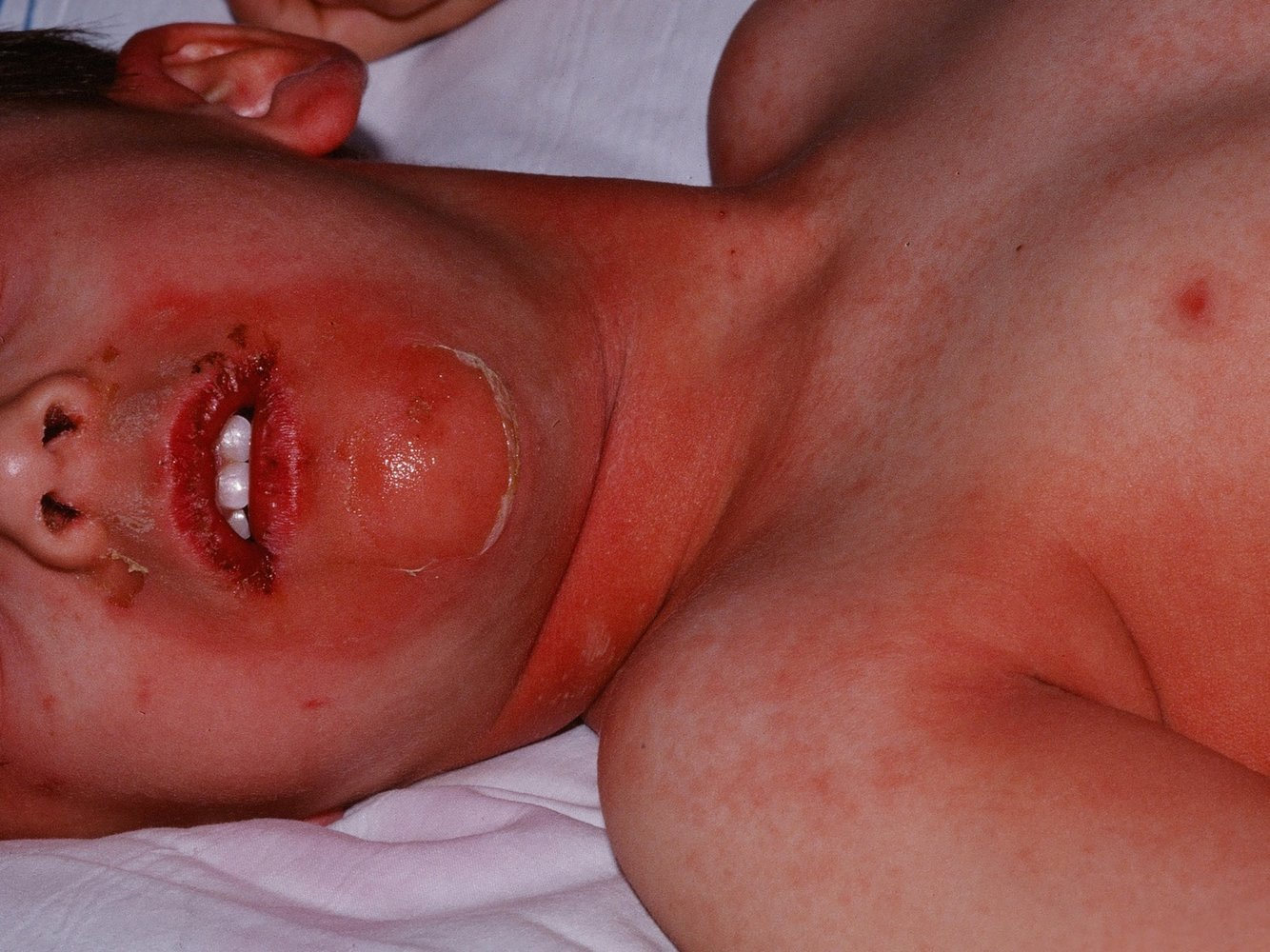Epidemiology
Etiology
- Pathogen
- Staphylococcus aureus strains that produce exfoliative toxins
- Exfoliative toxin A and B have been shown to cleave desmoglein-1 in the granular layer of the epidermis → disruption of keratinocyte attachments
- Route of infection: dissemination of toxins from a local infection
- Following a staphylococcal infection elsewhere (e.g., skin, mouth, nose, throat, GI tract, umbilicus). The initial infection may also be completely undetected.
- Following bullous impetigo
- Bullous impetigo is also caused by staphylococcal exfoliative toxins but remains localized, in contrast to SSSS.
Tip
SSSS belongs to the spectrum of diseases mediated by specific staphylococcal toxins, which also includes bullous impetigo, toxic shock syndrome (TSS), and Staphylococcus aureus food poisoning. Unlike TSS, SSSS does not have systemic manifestations (involvement of, e.g., liver, kidney, bone marrow, CNS).
Pathophysiology
Clinical features
Initially
- Fever, malaise, and irritability
- Skin tenderness
- Diffuse or localized erythema, often beginning periorally
After 24–48 hours
- Flaccid, easily ruptured blisters that break to reveal moist, red skin beneath (i.e., with a “scalded” appearance) → widespread sloughing of epidermal skin

- Nikolsky sign is positive
- No mucosal involvement
- Cracking, and crusting is common
- Signs of shock (hypotension, tachycardia)
Tip
Stevens-Johnson syndrome and toxic epidermal necrolysis manifest with mucosal involvement, SSSS does not.